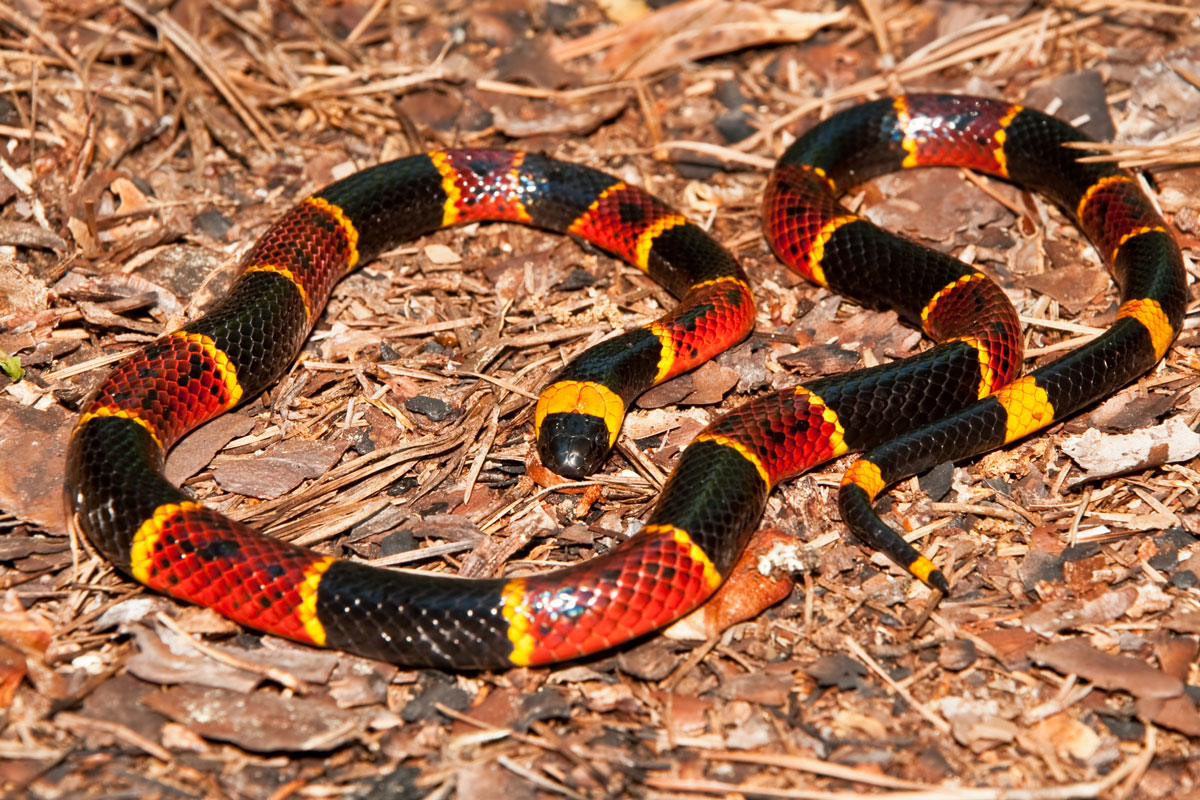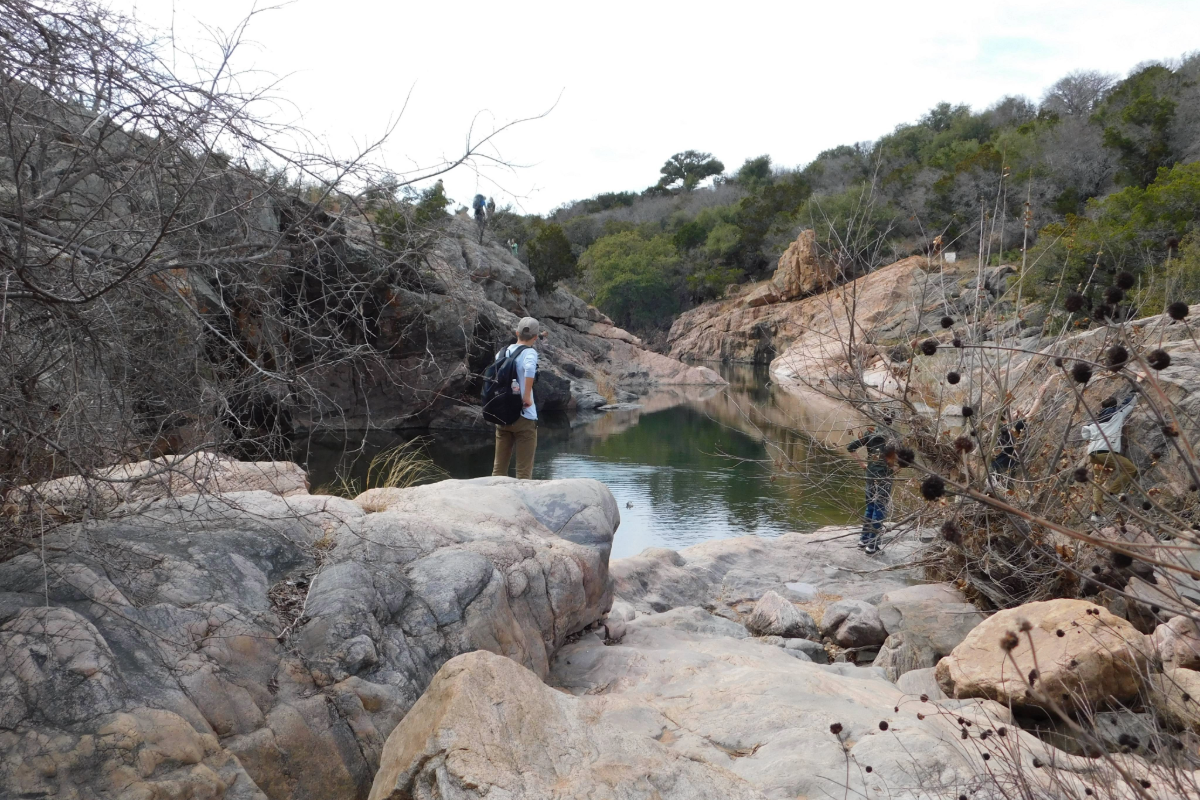
The broad-banded copperheads is tan with a distinctive reddish-brown Hershey’s Kisses pattern. The head is typically a coppery tan color. iStock image
No single trait can be used to identify venomous from non-venomous snakes. The best defense against deadly snakes is being able to identify all that are common to your area. Educate yourself on snakes found in your area, something I did by joining the Central Texas Snake ID Facebook Group.
Here is what I found out about four venomous snakes found in the Highland Lakes.
Copperheads are pit vipers with light tan bodies and a repeating reddish-brown hourglass pattern. From the side, the dark patterns resemble Hershey Kisses. The head is a coppery-tan color. Juvenile copperheads have a yellow-tipped tail. They can grow up to 2-3 feet long and are often found in rocky and wooded areas, near streams and rivers, and in weed-covered lots.
Cottonmouths (aka water moccasins) are pit vipers with thick, heavy-looking, dark bodies and a wide, dark pattern that’s difficult to see. Colors and patterns are more easily seen on younger cottonmouths. Adults are typically around 3½ feet in length. When threatened, the cottonmouth is known to open its mouth, or gape, revealing the white tissue inside, in addition to other defensive actions such as vibrating its tail. Found in and near water.
Western diamondback rattlesnakes have a diamond pattern along the back with alternating black and white rings on the tail just before the rattles. They range from 3-7 feet in length. Diamondback rattlers are the most common venomous snake in Texas. They are often found in grasslands and wooded, rocky, or brushy areas.

Coral snakes are small, slender snakes that typically have red, yellow, and black bands that completely circle the body. The red and yellow bands are usually touching. iStock image
Coral snakes are slender and generally have red/yellow/black bands that completely encircle the body. Typically, in the United States, the red bands touch the yellow bands. They are usually not over 2½ feet in length. They prefer wooded areas and are often burrowed under rocks, leaves, or wood.
WHEN A SNAKE BITES
The best preventative to a snake bite is snake education and using plenty of caution when outdoors, especially in the spring when they are coming out of hibernation. If bitten, here is what to do and what not to do.
IF BITTEN
Always assume envenomation has occurred and take these steps.
- identify species of venomous snake if possible
- keep victim calm; in fact, everyone should stay calm
- treat any symptoms of shock that may arise
- wash bite with disinfectant if available
- use NON-ASPIRIN pain reliever for pain
- remove rings, watch, bracelets, etc.
- keep bitten area elevated 45 degrees or more and above level of heart
- reduce unnecessary movement
- get victim to medical facility ASAP
WHAT NOT TO DO
- Do not incise bite marks, which can damage already traumatized tissue and cause more bleeding.
- Do not use a tourniquet, as that can restrict vital blood flow to traumatized tissue.
- Do not ice the bite as that can increases necrosis, or the death of tissue.
- Do not drink alcohol as it dilates blood vessels and spreads venom more quickly.
- Do not use aspirin or aspirin products that can increase bleeding.
- Do not apply pressure or immobilize as it could cause tissue damage.
DRY BITES
A dry bite is the term used when venom was not injected into the skin with the bite. Oft-repeated statistics report about 20-25 percent of all pit viper bites and 50 percent of coral snake bites are dry. Even so, it is imperative to treat every venomous snake bite as if it contained venom. Seek medical attention immediately.
Occasionally, a dry bite results in venom being expelled before fangs puncture the skin. Snake bite research suggests that some bites might be warning bites, meaning the snake is acting defensively and conserving its venom for prey.
While there is no proven method for keeping snakes away, here are some suggestions for making your yard less appealing to them.
- Keep the lawn mowed and free of limbs, stacked wood, scrap metal, and other things to hide under.
- Don’t leave out pet food.
- Move pot plants away from doors.
DETERRENTS THAT DON’T WORK
Repellents of any kind do not work. These include chemical repellents, mothballs, rope of any kind, a dead snake hung up or cut up and spread around, animal urine, or coffee grounds.
SNAKE DETERRENT BARRIER
While this is not a guarantee to keep snakes out, it will serve to discourage entry.
- ¼-inch grid, 3-foot-high hardware cloth either buried or folded (L-shape) with rocks piled on top of the folded area
- for gates, have a concrete threshold and line gate with rubber base in addition to hardware cloth across gate
For more snakes found in the Highland Lakes, including non-venomous ones, click here.
jgreenwell@thepicayune.com












